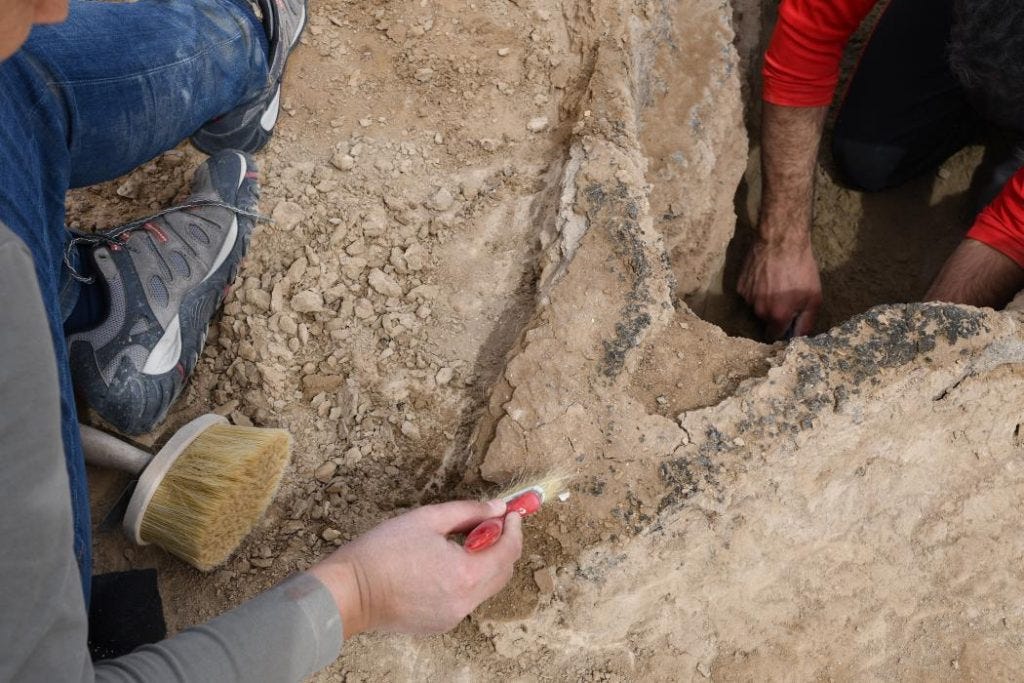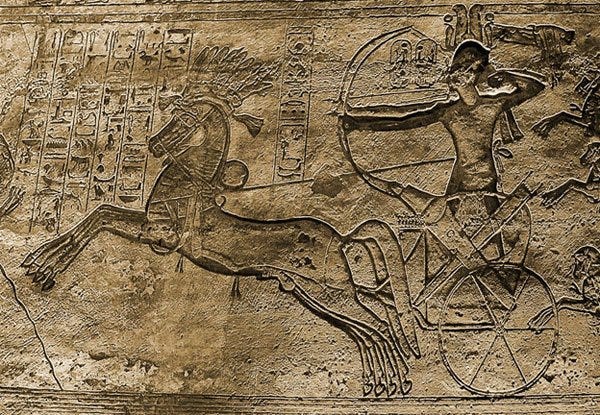Latest News
Issue 9
In The Field…
Records of the pyramid builders: discovering eye-witness accounts of a legendary construction project
Pierre Tallet and Mark Lehner explain how combining text and archaeology can expose the secrets of an extraordinary building project.
‘The papyri run to over 30 rolls and are the archive of a 160-strong work-gang known as ‘The Escort Team of “The Uraeus of Khufu is its prow”’. It seems that the last part of this name refers to a ship and that the men were essentially sailors. There are two different types of documents, with less than half of them comprising logbooks detailing the activities of some of these men. I am still working on the other records, but they are mostly accounting documents registering food, tools, and everything that was issued to the team. The material is very informative about how people worked for the monarchy at this time, and forces us to reject the old idea that slaves built the pyramids. Instead, the team was well fed and well treated – these were specialists working for most of the year on pyramid-related projects, not a group assembled to labour on it during the annual Nile flood when farmers didn’t need to tend to their fields.’
More at The Past.
A 4,000-Year-Old Mesopotamian Boat Has Been Discovered Near Uruk
In recent Mesopotamian news…
…a team of researchers from the Iraqi State Board of Antiquities and the German Archaeological Institute has removed a block of sediment containing traces of a 4,000-year-old boat from a site that was once a river flowing on the outskirts of the ancient city of Uruk, in what is now southern Iraq.
The boat was originally made out of…
…palm leaves, wood and reed. It was then covered in bitumen, also known as tar or asphaltum, a semi-solid kind of petroleum which was used in Mesopotamia in the construction of buildings and for waterproofing reed boats.
Uruk (Unug in Sumerian) was once located on the banks of the Euphrates River in southern Mesopotamia (modern-day Iraq). It was a once powerful city and one of the oldest too. According to the Epic of Gilgamesh, the main protagonist and hero, Gilgamesh was said to have once occupied the royal seat of the infamous city.
You can read more at Archaeology.org, Ancient Origins and at the Biblical Archaeology Society.
Site News…
New Shop section is now up
I just put together a shop page dedicated to historical related items. It contains a listing of suggested books (both audio and print), magazine subscriptions, documentaries and miscellaneous items. Enjoy!
Also, in case you missed it in the last newsletter…
Is there evidence of Proto-Israelites at Qadesh?
It would be a battle forever immortalized in the annals of the ancient Egyptians. The year was 1274 BCE and the location, Qadesh (Kadesh), an ancient Levantine city in what is now part of Western Syria. A young 19th Dynasty Pharaoh, Ramesses II (reigned ca. 1279 – 1213 BCE), campaigned northeast of his kingdom as he believed it was his obligation to reclaim the land his forefathers once ruled (Healy, 19). The land in question was overtaken by the Hittite forces under the direction of Mursilis II (reigned ca. 1321 – 1295 BCE). Ramesses led the Egyptian forces against the Hittite Muwatalli II (reigned ca. 1295 – 1272 BCE) (Healy, 21).






